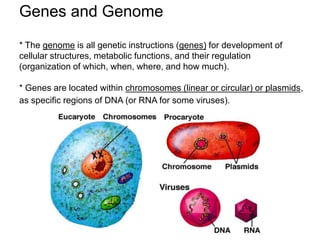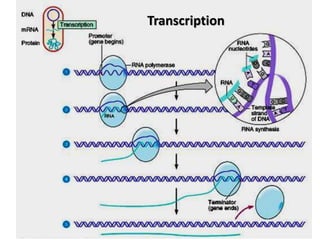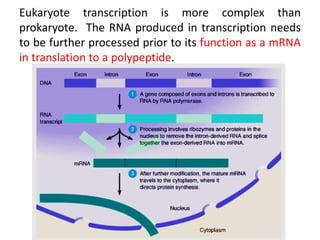This document provides an overview of microbial genetics. It discusses key topics like DNA, RNA, proteins, transcription, translation, gene regulation, and genetic variation. Regarding prokaryotes vs eukaryotes, it notes that prokaryotes lack membrane-bound organelles and their DNA is not sequestered in the nucleus. It also explains processes like DNA replication, transcription, translation, and how gene expression is regulated through operons and repressor/activator proteins binding DNA. The document outlines bacterial mechanisms of genetic variation like mutation and horizontal gene transfer through conjugation, transformation and transduction.




































